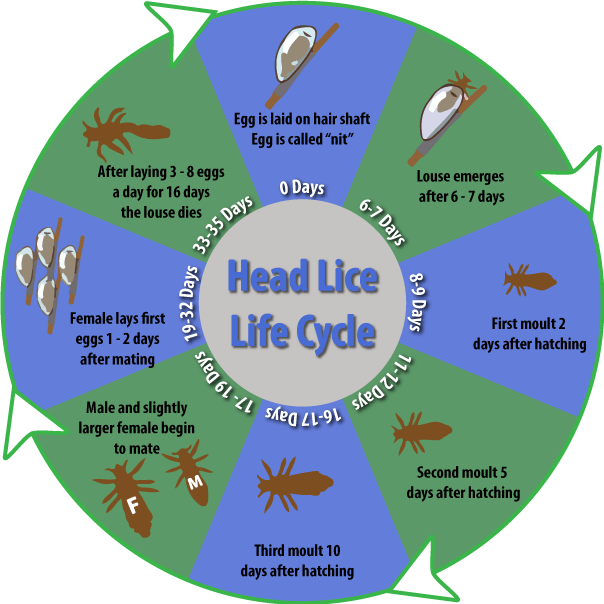Know About the Life Cycle of Head Lice
Head lice have become one of the common hair problems in children of 3-11 years. Some parents think keeping their children from a lice-infested person can prevent their kid's from catching head lice. And that's true to some extent. Though lice do not have the capability of jumping from one head to the other head, they can crawl really fast. And this rapid moving nature of the louse makes it easier for them to transfer from one person to another. For the best results, hire professional lice removal services.
While head lice are common in children, they can also develop on the adult's head. Yes, that's true! In fact, any individual who shares their hair accessories such as hats, rubber bands, comb, towel, hairpin, and etc with the infested person can develop lice infestation. Head lice are tiny organisms that crawl with their seven legs. Their size is not more than 2 millimeters (i.e. around a sesame seed) and they depend on their hosts' blood to survive. Lice feed on human blood several times a day. The presence of the nit nymphs or head lice can be detected through certain symptoms. The most common symptom of lice presence in your hairs is the visibility of tiny creatures of white, grey, black, or brown colors crawling in your hairs. Get the most of professional lice removal services.
In addition, you may also notice:
- An urge to scratch your head frequently (this happens when the lice feed on your blood).
- Irritation
- Tickling sensation
- Red marks on your neck, behind the ears, or on the scalp
- Lack of sleep due to itchiness (as lice are more active during the night hours).

Life Cycle of Head Lice
- Nits: Head louse, at their inception, can be observed as a tiny creature (not more than 1 millimeter in length) of whitish-yellow color. These tiny organisms are known as nits, which do not have the ability to move or crawl on your head. Even though they can’t move (and thus don’t transfer from one person to another), nits are firmly attached to the strands of your hair. They are so tightly attached that even the fine-toothed comb might be ineffective in getting them out of your hairs. These small size creatures require a warm temperature to survive. Hence, they are found near your scalp (usually at a 6mm distance from your scalp). Most of the people mistake nits as dandruff since they are of white or yellow color.
- Nymphs: Nits take about 7 to 10 days to grow into nymphs (the white or yellow color tiny organisms, also known as young louse). Nymphs are relatively bigger in size compared to the nits. It takes around 9 to 12 days for the nymphs to become a mature louse. Nymphs have the ability to crawl and feed on your blood several times a day to develop into an adult louse.
- Adult Louse: Basically, an egg hatched by a louse develops into an adult louse within 2 to 3 weeks. An adult louse is as small as a sesame seed and can be brown, grey, black, or white in color (depending on the color of your hairs). The female lice are much bigger than male lice and the former lays around 8 eggs per day.
The mature louse can crawl, move, and feed on the human blood to survive. In fact, they tend to feed on their host's blood every 3-4 hours. Their average life expectancy is 30 days and their survival is almost impossible when detached from the human scalp. However, some studies suggest they can survive for a day or two when taken off their host’s hair. Head out to the professional lice removal salons in your area.